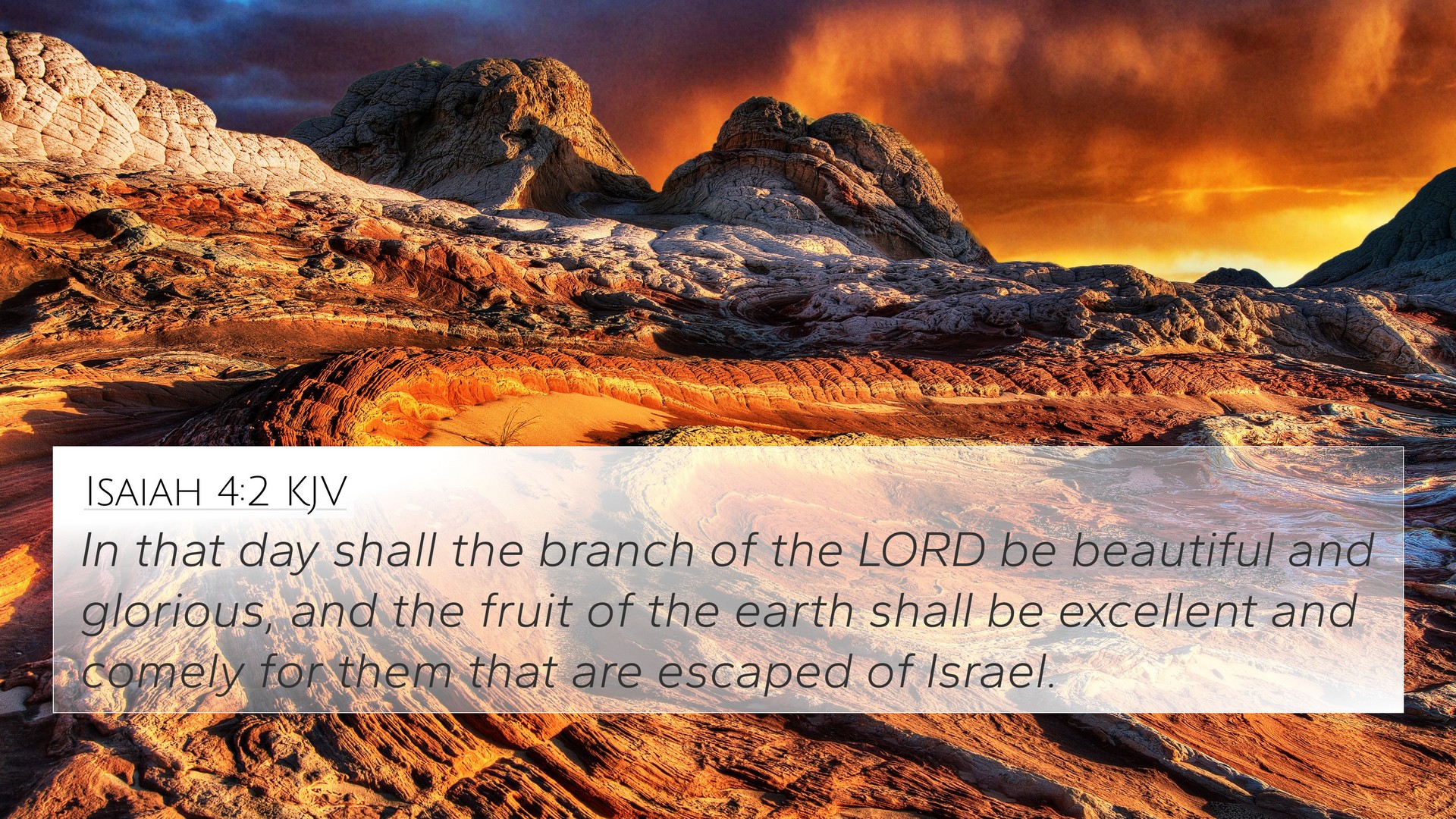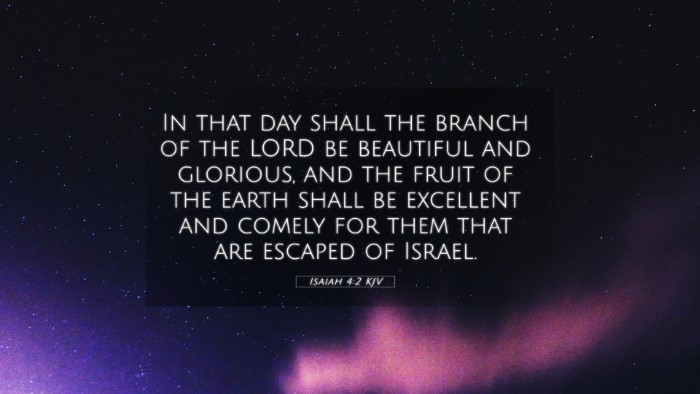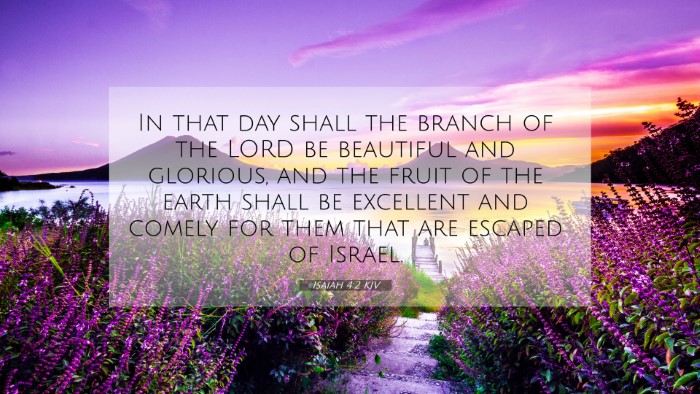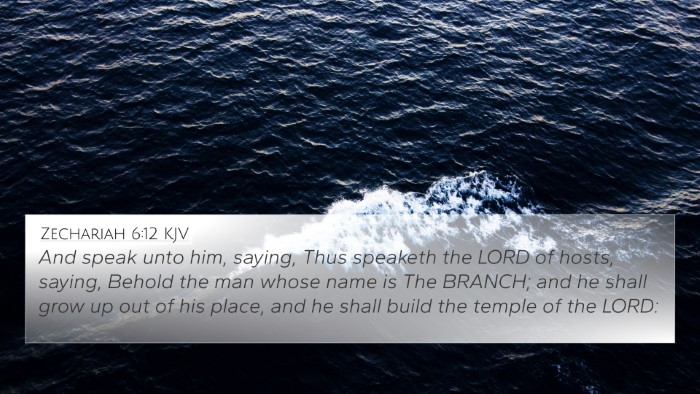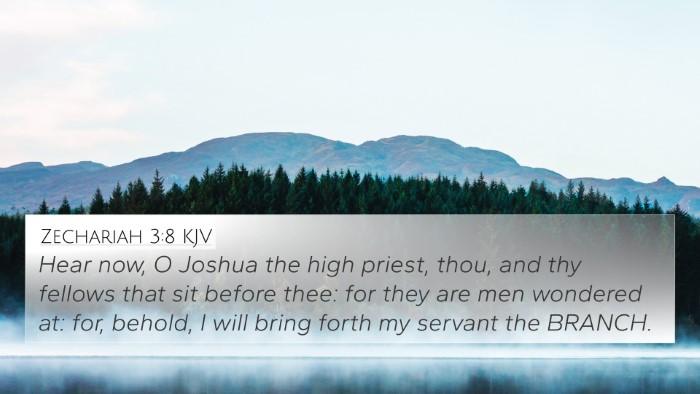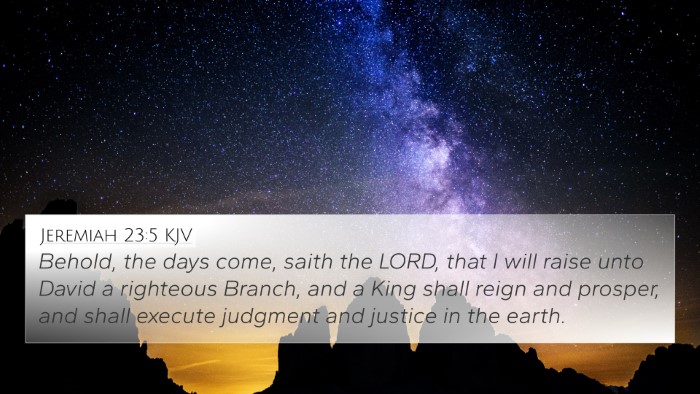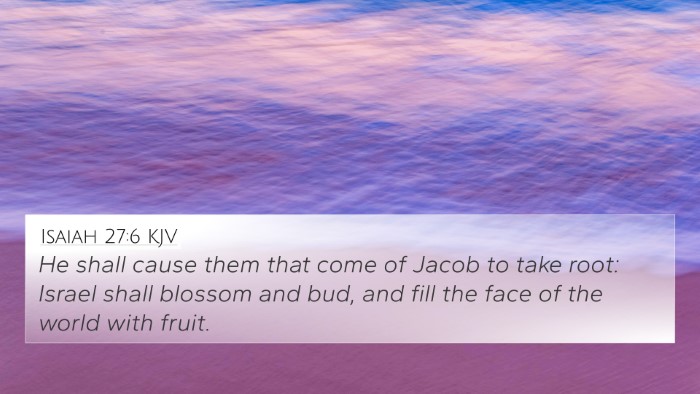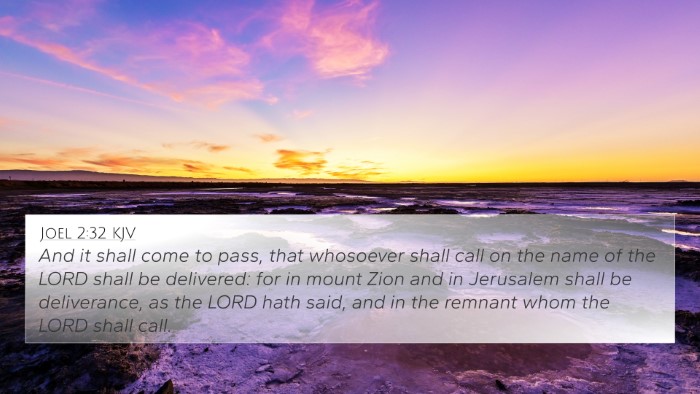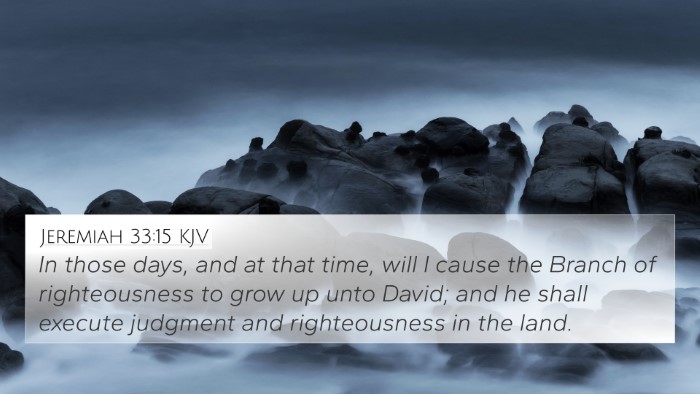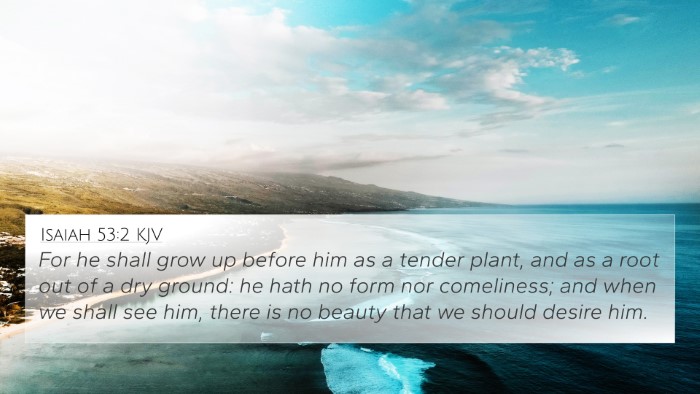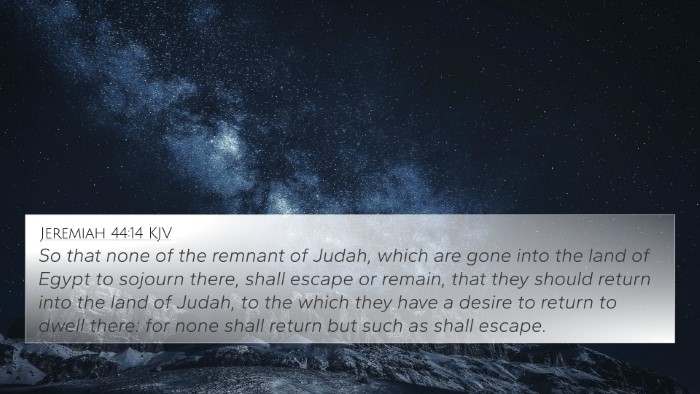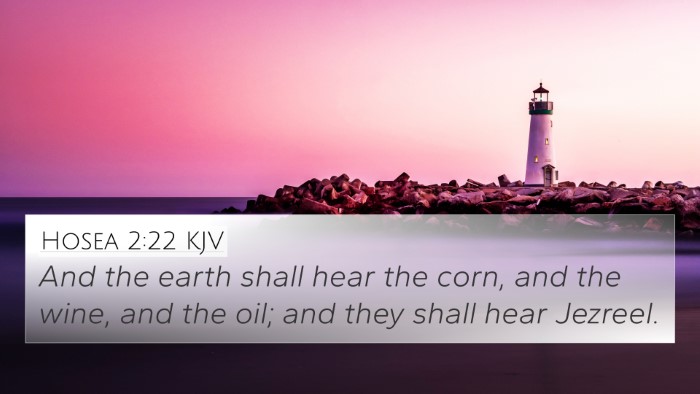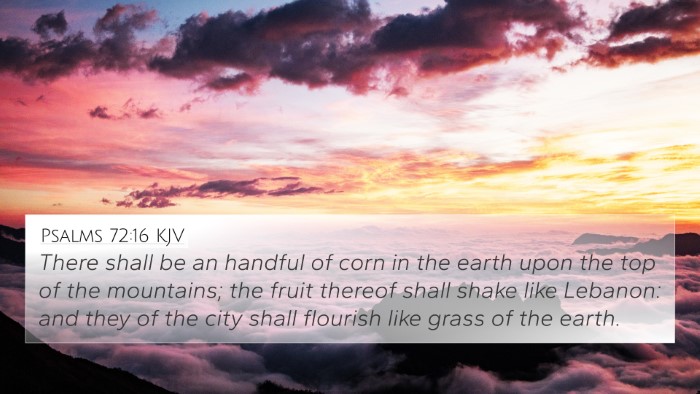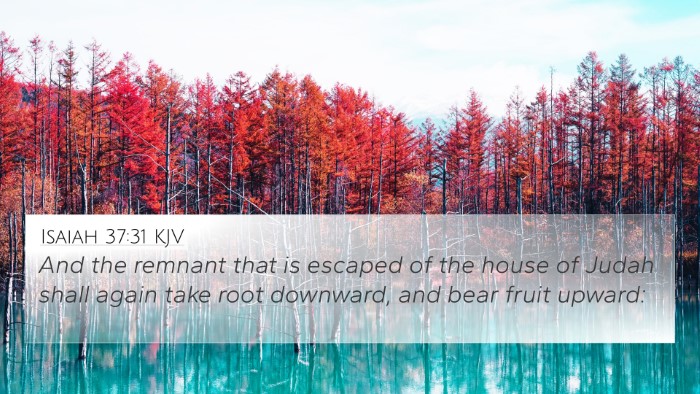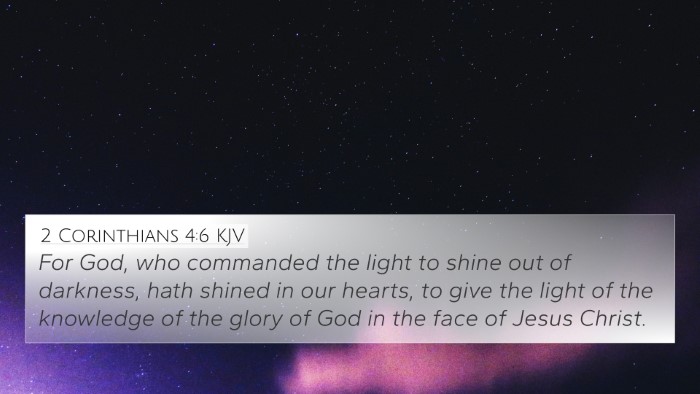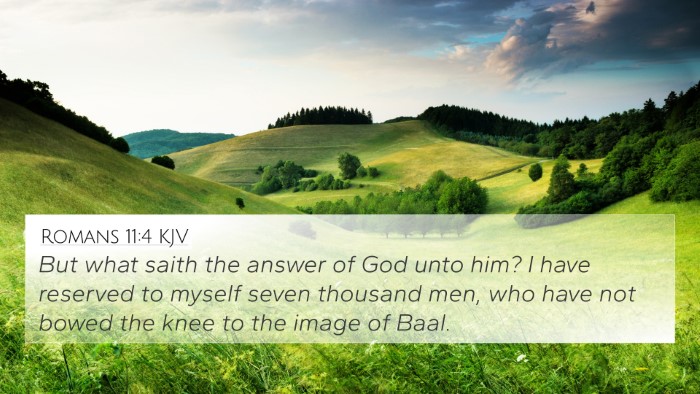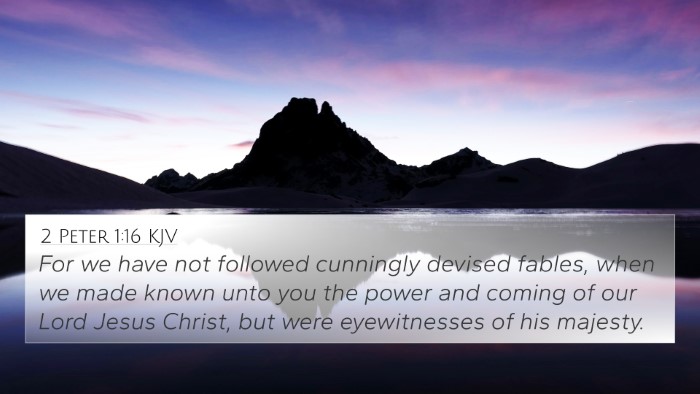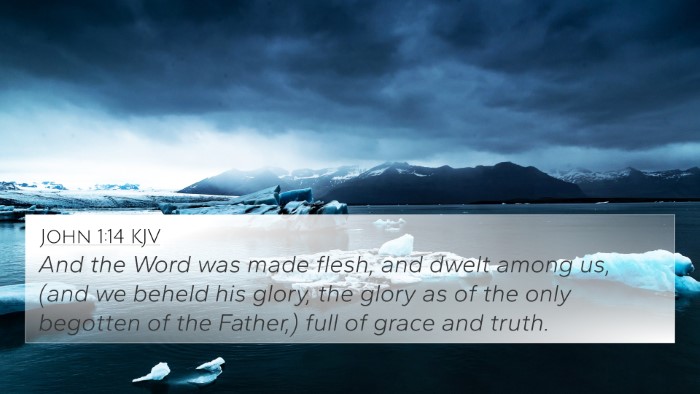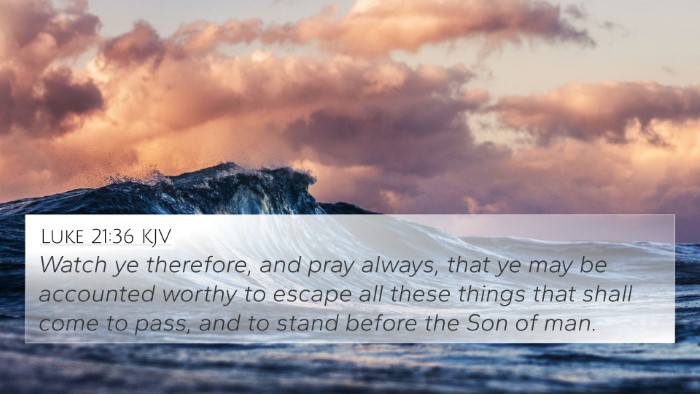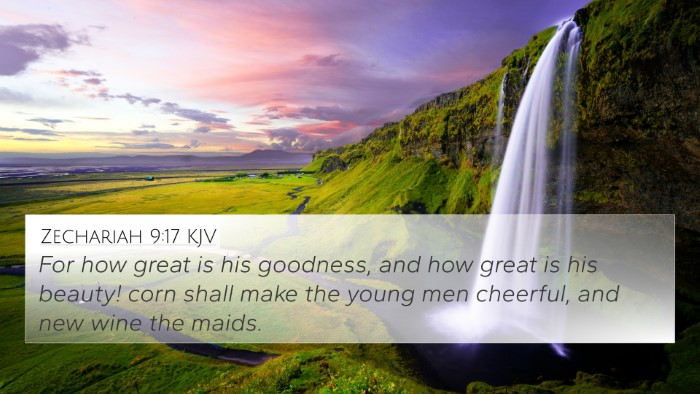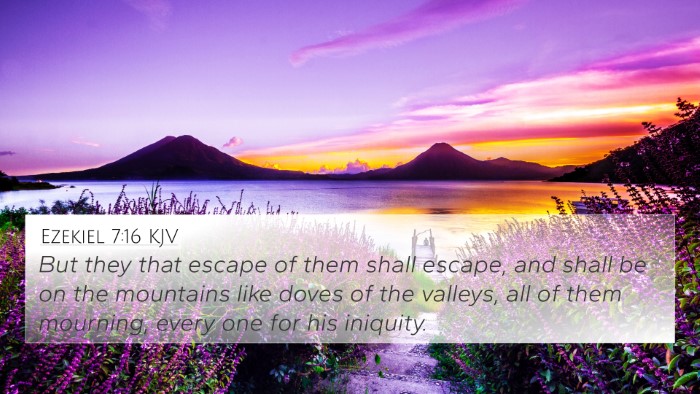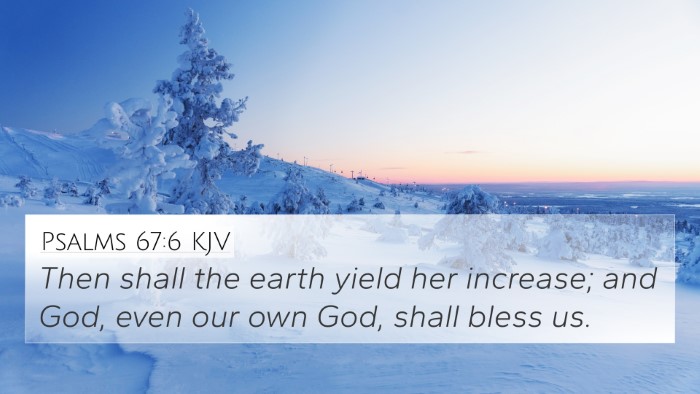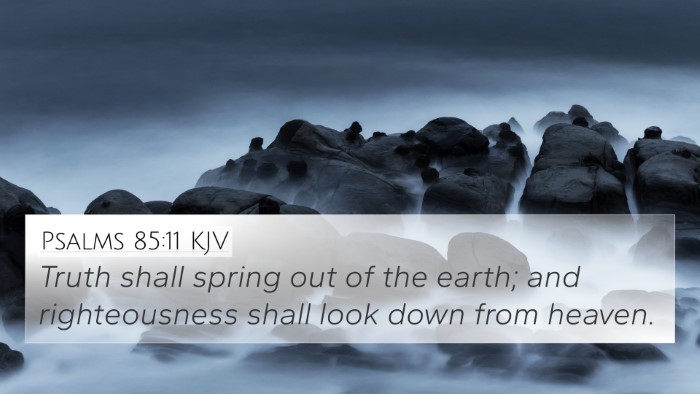Understanding Isaiah 4:2: A Comprehensive Analysis
Isaiah 4:2 states: "In that day the branch of the Lord shall be beautiful and glorious, and the fruit of the earth shall be excellent and appealing for those of Israel who have escaped." This verse, rich in imagery and theological significance, speaks to the hope of restoration and the promise of God’s provision. Below is a summarized interpretation based on insights from various public domain commentaries.
Contextual Background
To fully grasp the meaning of Isaiah 4:2, it is essential to understand its context within the Book of Isaiah. This text follows a series of prophetic proclamations about judgment and restoration. Here, Isaiah pivots to a message of hope, foreshadowing a time when God’s presence will manifest through the coming Messiah, referred to as the "branch."
The Branch of the Lord
The term "branch" symbolizes both the royal lineage of David and the Messianic deliverance. As noted by Matthew Henry, the "branch" indicates a growth of righteousness that stems from the roots, signifying Jesus Christ as the fulfillment of Old Testament prophecies. Albert Barnes reinforces this notion, highlighting that this "branch" will embody both beauty and glory, representing God’s restoration of His people.
Beautiful and Glorious
The description of the "branch" as “beautiful and glorious” indicates a state of perfection and divine favor. Adam Clarke elucidates that these adjectives reflect the spiritual and physical blessings that will be bestowed upon the remnant of Israel. The beauty here is not only aesthetic but encompasses spiritual richness and joy that comes from a restored relationship with God.
The Fruit of the Earth
The phrase "the fruit of the earth" alludes to the abundant blessings that God will provide. Matthew Henry interprets this "fruit" as the crop of grace and gratitude that emerges in the lives of those who return to God. This abundance is representative of the blessings that follow redemption and signifies a bountiful life enriched by divine favor.
Those Who Have Escaped
The latter part of the verse refers to "those of Israel who have escaped." This group symbolizes those who remain faithful amidst turmoil. Albert Barnes notes that this remnant is precious to God and will be the recipients of His blessings. This concept is echoed in other biblical texts that discuss a remnant, highlighting God’s faithfulness to His covenant people despite their unfaithfulness.
Cross-References
Isaiah 4:2 correlates with several other biblical texts that enhance its meaning:
- Jeremiah 23:5: Discusses the "righteous Branch" raised for David.
- Zechariah 3:8: Describes Joshua the high priest as a symbol of the coming Branch.
- Isaiah 11:1: Depicts the Messiah as a shoot from the stem of Jesse.
- John 15:5: Jesus calls Himself the vine and we are the branches, indicating unity with Him in bearing fruit.
- Romans 11:5: Talks about a remnant chosen by grace.
- Luke 2:14: Proclaims glory to God in the highest during the birth of Christ.
- Revelation 22:16: Jesus as the root and offspring of David, the bright Morning Star.
Thematic Connections
This verse also invites a broader thematic exploration within scripture. Key themes include:
- Hope and Restoration: A recurrent theme in Isaiah linking to the New Covenant through Christ.
- Divine Righteousness: The depiction of divine attributes reflected in the Messiah’s character.
- Remnant Theology: The significance of the faithful few within a rebellious generation.
Conclusion
In Isaiah 4:2, we find a beautiful encapsulation of hope, restoration, and divine grace. The imagery of the “branch” serves both as a prophecy of Christ and as an assurance of God’s continued faithfulness to His people. Through understanding the connections between this verse and others, we gain deeper insights into the overarching narrative of salvation history.
Further Study Suggestions
For those interested in exploring the connections within scripture further, consider using a bible concordance or a bible cross-reference guide as a tool for bible cross-referencing. Approaching cross-referencing Bible study methods can yield rich insights into how verses link subtler theological concepts.
